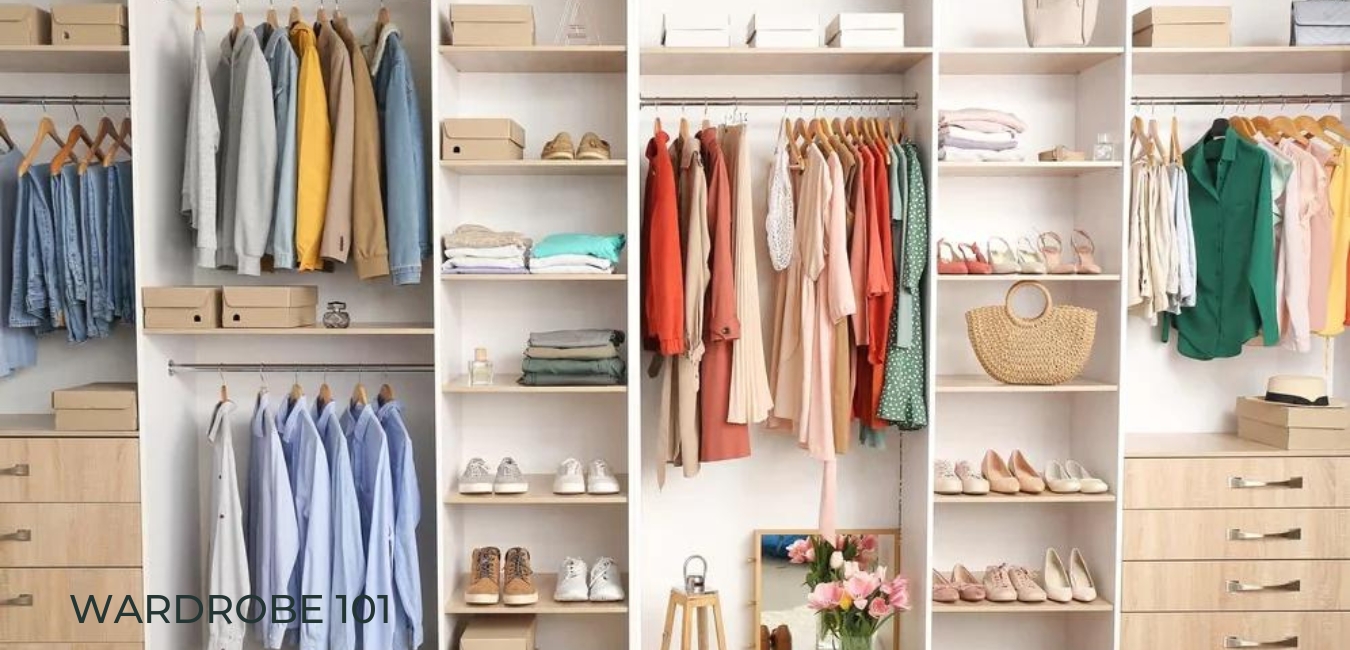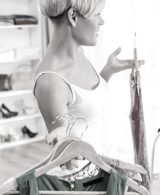How To Lay A Solid Wardrobe Foundation

Inspiration or frustration?
Every time you look into your closet, I would prefer you to have carefully matched clothes, in a way that harmoniously complements each other and your lifestyle. Unfortunately, I also know that this does not just happen.
Most women have wardrobes bursting with items, but very limited options to wear because few things coordinate with anything else or do not meet their lifestyle needs.
Especially if your clothing dollar is limited, it makes good sense to spend time planning your purchases. This will enable you to create a wardrobe full of clothes that work for you. To do this, you must develop self-discipline and only buy items that fit your predetermined plan.
Your lifestyle
Women today find themselves in many different roles: mother, wife, single parent, friend, employee, employer, committee member, neighbour, socialite, and so on. These roles combine to form an overall lifestyle. By analysing your lifestyle, you can identify your needs and prioritise your clothing purchases.
If you are one of many women frustrated by your wardrobe, you have either:
- Never been taught what clothes would suit your body
- Do not understand the clothes best suited to your lifestyle
- Have experienced a change in your circumstances that now makes the clothes in your wardrobe no longer suitable.
Most women do not give much thought to their clothing purchases and, as a result, end up with a hotch-potch wardrobe of clothes where few things work.
For a wardrobe to work, it takes time and careful consideration of your needs. This includes your lifestyle, personality, budget and the image you wish to project to the world. Once these areas are worked out, and you know what suits your body shape and colouring, your search for suitable garments and accessories will suddenly become much quicker, easier and maybe for the first time truly ENJOYABLE!
However, for this process to maintain its authenticity, it needs to be repeated every few years or whenever you have had a shift in circumstances. Please complete the following list and fill in your lifestyle pie to determine your wardrobe needs. If you ascertain that 50 per cent of your time is spent at work, your wardrobe should contain 50 per cent of clothes suitable for the type of work you do.
- Work – Business Casual:
- Sporting Activities – Sports Wear
- Home/Relaxing – leisure wear
- Shopping/socialising – dressy casual
- Entertaining – dressy to formal wear
Creating wardrobe clusters is an intelligent way to make your life much easier when recognising what you own. This will enable you to build a practical wardrobe of clothes.
A wardrobe cluster is a small group of items in one or two colours that can be worn together.
Nine well-coordinated pieces will give you twenty outfits. Add three more pieces, and you can make up to forty combinations. Such an approach not only makes getting dressed easier, but also simplifies packing for a trip, or building your first business wardrobe on a tight budget.
Cluster Guidelines:
- Identify the cluster you want to create, e.g. relaxed or business casual.
- Choose two colours from your COLOUR ID. The colours chosen should suit your aspirations and be able to be worn together. You will be wearing these colours frequently, so opt for basic colours such as black, navy, tan, taupe, deep olive, red-brown etc., that you will not tire of quickly. Bright colours are best kept as accent colours.
- Select a core cluster garment using your wardrobe inventory. This could be a favourite jacket, pants or skirt. Allocate a base colour for the cluster.
- Complement the core cluster item with companion garments to complete the look. For instance, if the core garment is a jacket, you will need pants, a skirt, and a shirt, blouse or sweater to create an outfit. Choosing bottoms in the same colour and fabric as the jacket will achieve a ‘suited look’. A smart casual look would be a pair of chino pants, a blouse and a waisted jacket.
- Repeat this procedure to complete another outfit, working in the second basic colour. You may want to choose a subtle pattern or stripe within this grouping. Take special care to ensure that the pieces of the second cluster can be worn with those of the first.
- Add extra pieces. Four more tops, another bottom and a jacket that will coordinate with these outfits.
- Some tops could be sweaters and vests. These items can be in accent or fashion colours to add spice to your basics.
- Decide what accessories you need to coordinate with the outfits: shoes, belts, scarves, ties, jewellery, bags, briefcases etc. These items add life and interest to your basic cluster. By changing your accessories, you can totally alter your appearance.
- Begin a second core that coordinates with at least half of the garments in the first. This clustering system will become the blueprint for your wardrobe. The guidelines include 12 pieces: two jackets, three bottoms, six tops and one coat. By selecting the garments carefully so they can be worn together, these pieces will give you about forty outfits.
By developing your wardrobe in this manner, if one garment needs to be cleaned or ironed, there will always be something else in your wardrobe that can be worn in its place. Additionally, this allows for “crisis dressing”. This can occur when you haven’t decided what you want to do the following day and wake up to find that your alarm did not go off. You have twenty minutes to prepare for an all-important meeting and look your best. You can quickly reach into your wardrobe and pull together the appropriate pieces.
Type “MORE” in the comments if you want more such content.




